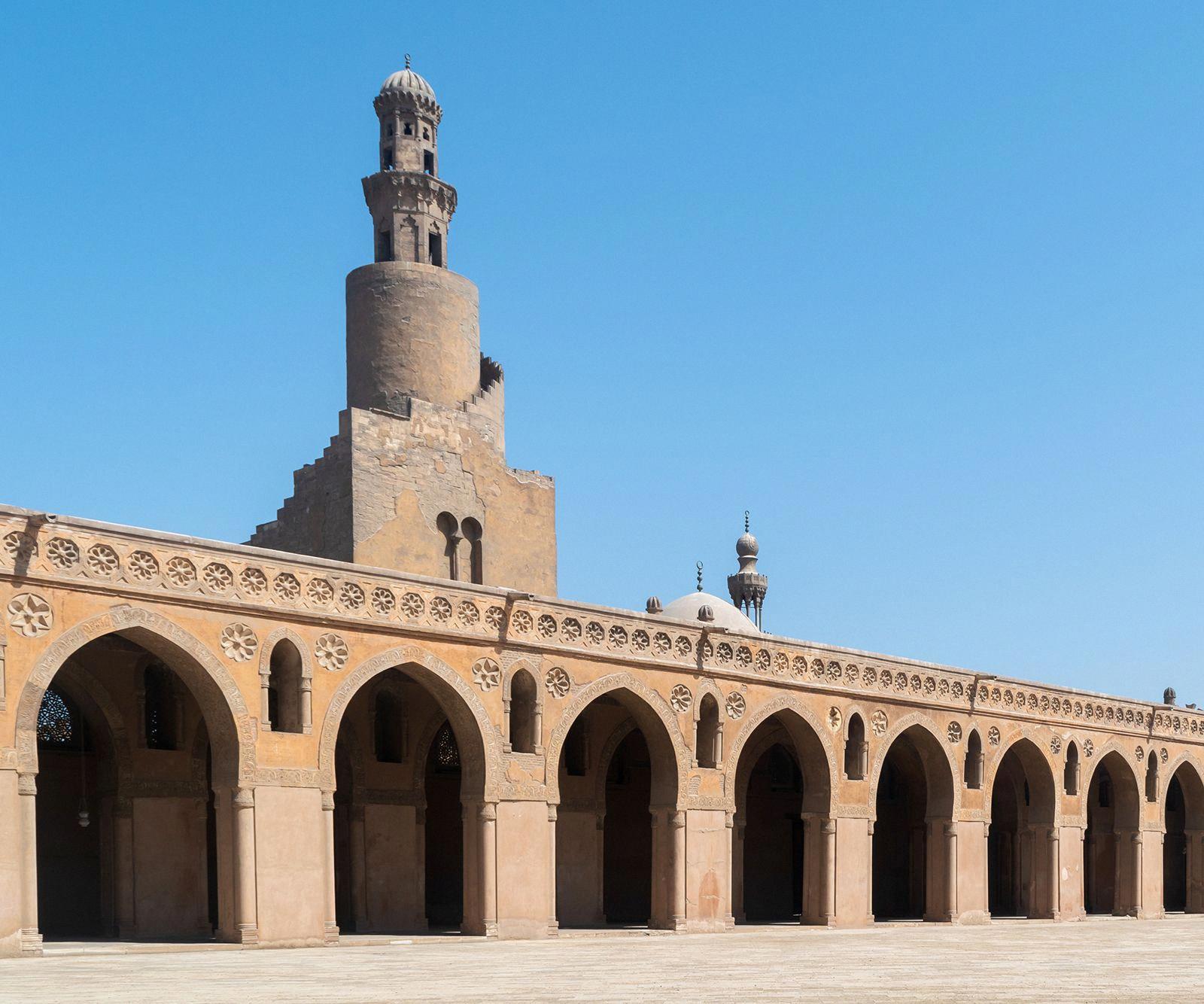Minarets are an integral part of mosque architecture and hold significant cultural and religious importance in the Muslim world. These tall, slender towers are designed to serve as a platform from which the call to prayer, known as the Adhan, is announced by the muezzin. With their distinctive shape and prominence in the skyline, minarets have become iconic symbols of Islamic architecture.
The primary purpose of a minaret is to ensure that the call to prayer can be heard by the community surrounding the mosque. The Adhan is a melodious chant that echoes through the air, inviting Muslims to come together for prayer. By having the muezzin climb to the top of the minaret, the call can reach a larger audience, even in densely populated areas.
Minarets are typically constructed either adjacent to or attached to the main mosque building. They are often tall and slender in shape, with balconies or platforms at various heights. These balconies provide a vantage point for the muezzin to deliver the Adhan, as well as for individuals to witness the sweeping views of the surrounding area.
While the precise design and architectural style of minarets can vary across different regions, there are some common features. Many minarets have a conical or cylindrical shape, tapering towards the top. They may be adorned with intricate geometric patterns, calligraphy, or decorative elements, reflecting the rich artistic heritage of Islamic culture.
The history of minarets dates back to the early days of Islam. The first minarets were built during the time of the Prophet Muhammad in the 7th century. Initially, they served as visual markers to indicate the location of a mosque. Over time, however, minarets took on a more functional role, becoming platforms for the call to prayer.
In addition to their practical purpose, minarets also carry symbolic significance in the Islamic faith. They represent a connection between the earthly realm and the divine. The towering height of the minaret symbolizes the loftiness of God and the aspiration for spiritual elevation. It is also a physical manifestation of the mosque’s presence in the community and its role as a center for worship and community gatherings.
In recent years, minarets have become subjects of controversy in some parts of the world. However, it is important to understand that minarets are not intrinsic to the practice of Islam. The only requirement for a mosque, according to the Qur’an, is that it faces towards the Kaaba in Mecca during prayer. The presence or absence of a minaret does not affect the validity or sanctity of a mosque.
Minarets are tall towers attached or adjacent to a mosque that serve as platforms for the call to prayer. They are designed to ensure that the Adhan can be heard by the community and have become iconic symbols of Islamic architecture. While minarets hold cultural and religious significance, they are not obligatory in mosque construction. The presence of a minaret does not define the essence of a mosque, as its primary requirement is to face towards Mecca.
What Are Minarets Used For?
Minarets serve multiple purposes in the context of mosque architecture. Here are some of the main uses of minarets:
1. Call to Prayer: The primary function of a minaret is to serve as a platform from which the call to prayer, known as the Adhan, is announced. The muezzin, a designated person, ascends the minaret and recites the Adhan, inviting worshippers to come and pray.
2. Symbolic Significance: Minarets hold significant symbolic value in Islamic culture. They are considered a visual representation of Islam and serve as a prominent marker for the presence of a mosque in a community. They are often seen as a symbol of religious and cultural identity.
3. Orientation and Direction: Minarets are strategically placed in mosques to help guide worshippers towards the direction of Mecca, which is considered the holiest city in Islam. They provide a visual reference point for Muslims to align themselves during prayer.
4. Communication and Announcement: In addition to the call to prayer, minarets have historically been used as platforms for making important announcements to the community. This could include notifying people about events, gatherings, or important religious dates.
5. Architectural Aesthetics: Minarets contribute to the overall architectural beauty and grandeur of a mosque. They often feature intricate designs and decorative elements, showcasing the craftsmanship and artistic skills of the builders.
6. Historical and Cultural Significance: Minarets have played a role in Islamic history and culture. They have been used to signify the power and influence of ruling dynasties, as well as to mark important historical events or victories.
7. Navigation and Landmark: Minarets can also serve as landmarks, helping people navigate through cities and identify the location of a mosque. They can be seen from a distance and act as a recognizable point of reference.
Minarets play a vital role in the Islamic faith, serving as a visual and auditory symbol of religious devotion, architectural splendor, and community engagement.

What Does Minaret Meaning?
A minaret is a tall, slender tower that is typically found attached to a mosque. It serves as a distinctive architectural feature of Islamic religious buildings. The primary function of a minaret is to provide a platform from which the muezzin, the person who calls Muslims to prayer, can make the adhan, or the Islamic call to prayer. The minaret is strategically positioned to ensure that the call to prayer can be heard from a distance.
The word “minaret” originates from the Arabic word “minara,” which means “lighthouse” or “beacon.” This reflects the historical purpose of minarets, as they were used to guide people towards the mosque and announce the times of prayer. Over time, minarets have evolved to become symbolic structures that represent the presence of Islam in a community.
Minarets vary in design and architectural style, reflecting the diverse cultural influences within the Islamic world. Some minarets are simple and unadorned, while others are intricately decorated with ornate carvings, geometric patterns, and colorful tiles. They can be cylindrical, square, or octagonal in shape, and often feature one or more balconies or galleries where the muezzin stands to deliver the call to prayer.
In addition to their religious significance, minarets also serve as landmarks and symbols of Islamic identity. They are often visible from a distance, acting as a visual representation of the mosque and the community it serves. Many historic mosques are renowned for their majestic minarets, which have become iconic structures in the cities or regions where they are located.
To summarize, a minaret is a tall tower attached to a mosque that serves as a platform for the muezzin to call Muslims to prayer. It is an architectural feature with historical, religious, and cultural significance within the Islamic world.
What Is The Purpose Of Minarets Adjacent To A Mosque?
The purpose of minarets adjacent to a mosque is to facilitate the call to prayer, known as the adhan, which is issued from mosques five times a day. The minaret serves as a tall tower that is strategically designed to amplify the sound of the call to prayer so that it can be heard loud and clear throughout a town or city.
The main function of a minaret is to provide a platform for the muezzin, the person who recites the adhan, to climb up and deliver the call to prayer. The height of the minaret allows the sound to travel over long distances, ensuring that Muslims in the vicinity of the mosque are aware of the designated prayer times.
In addition to its practical purpose, the minaret also holds symbolic significance in Islamic architecture. It serves as a visual marker of the presence of a mosque in a community, acting as a beacon of faith and a symbol of Islamic identity. The unique architectural design of minarets often reflects the cultural and historical context of the region in which they are built.
To summarize, the purpose of minarets adjacent to a mosque is to enable the call to prayer to be heard by Muslims in the surrounding area, while also serving as a visual symbol of the mosque and Islamic faith.
Are Minarets Required For Mosques?
Minarets are not explicitly required for mosques according to the teachings of the Qur’an. The Qur’an, which is the central religious text of Islam, does not specifically mention the necessity of minarets in the construction of mosques. Instead, the primary requirement for a mosque is that it should be oriented towards the Kaaba in Mecca.
Here are some key points to consider:
1. No specific directive in the Qur’an: The Qur’an, being the holy scripture of Islam, provides guidance on various aspects of religious practices, but it does not explicitly mention the need for minarets in mosques.
2. Focus on the direction of Mecca: The primary requirement for a mosque is to face the Kaaba, which is the sacred building located in Mecca. This direction, known as the qibla, is essential for Muslims during prayer.
3. Historical development: Minarets have been a traditional architectural feature in many mosques around the world. They were introduced over time as a means to call Muslims to prayer (adhan) and to provide a visually distinctive element to the structure. However, their presence is not mandatory.
4. Symbolic significance: Minarets have gained symbolic importance in Islamic culture and are often associated with mosques. They are seen as a representation of Islamic identity and can serve as a focal point for the local community.
5. Varied mosque designs: Mosques exist in different architectural styles and designs across the world, reflecting local cultural influences. While some mosques include minarets, others may not, depending on regional customs, available resources, and the preferences of the community.
While minarets have become a prominent feature in many mosques, they are not explicitly required by the Qur’an. The primary requirement for a mosque is to face Mecca, and the inclusion of minarets depends on local traditions and architectural choices.

Conclusion
Minarets are tall towers that are typically attached or adjacent to mosques. Their main purpose is to serve as a platform from which the call to prayer, known as the Adhan, is announced by the muezzin. Although there is no specific mention of minarets in the Qur’an, they have become an integral and iconic feature of mosque architecture.
The design of minarets is carefully planned to ensure that the call to prayer can be heard clearly and resonates throughout the town or city. They are often slender and tall, allowing the sound to travel far and wide. Some minarets may have multiple balconies, providing the muezzin with different vantage points to deliver the call to prayer.
While minarets primarily serve a functional purpose, they also hold cultural and architectural significance. They are often intricately designed, showcasing the craftsmanship and artistic flair of the era in which they were built. Minarets can vary in style and appearance, reflecting the diverse architectural traditions of different regions and periods.
Minarets play a vital role in the Islamic faith, serving as a beacon for the Muslim community and symbolizing the connection between the mosque and the surrounding community. They not only serve as a practical means of announcing the call to prayer but also serve as a visual representation of Islamic identity and heritage.
